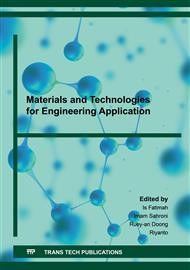p.3
p.9
p.15
p.21
p.29
p.35
p.41
p.49
p.57
A Preliminary Study for Modification of Wetting Properties on Cotton Polyester (TC) Fabric Surface Using Atmospheric Plasma Corona Discharge Technology
Abstract:
Textile materials generally have intrinsic properties, such as flexibility, light volume density, strength, tenacity, comfort and softness. Based on these characteristics, the textile material is generally given a special additional function, such as hydrophobic or hydrophilic properties. The addition of these special functions to the textile industry is generally using conventional wet methods that require more energy and water as well as more chemicals need and expensive price. Plasma technology is one of the dry process technologies and it can reduce the use of chemicals that can pollute the environment. This article describes the application of atmospheric plasma corona discharge technology in the textile sector, especially its use in modifying wetting properties on the surface of polyester cotton (TC) 70%. The results showed that by varying the time of plasma treatment on 70% TC cotton polyester fabric with density of weft and warp respectively 70 strands / inch and 60 strands / inch we found that there was a change in the wetting properties of the fabric with increasing hydrophilic properties of the fabric. SEM images show the example of morphology of cotton polyester fabric surfaces treated with time of exposure by plasma at one minute (60 s) at 3 kV of output voltage as the optimal exposure time and applied voltage to enhance the wetting properties.
Info:
Periodical:
Pages:
29-34
Citation:
Online since:
April 2021
Keywords:
Price:
Сopyright:
© 2021 Trans Tech Publications Ltd. All Rights Reserved
Share:
Citation:


